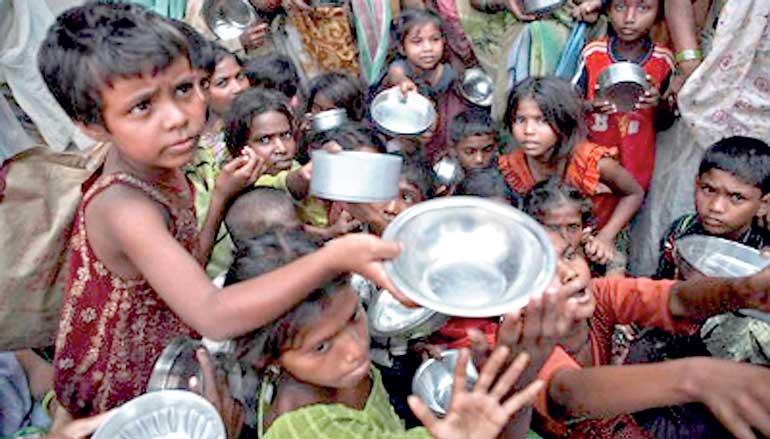Thursday Dec 25, 2025
Thursday Dec 25, 2025
Friday, 10 July 2015 00:00 - - {{hitsCtrl.values.hits}}

LONDON (Thomson Reuters Foundation): About 800 million people still live in dire poverty and suffer from hunger despite the United Nations Millennium Development Goals (MDGs) being the most successful anti-poverty push in history, the UN said on Monday.
The number of people living in extreme poverty on less than $ 1.25 a day has more than halved, to 836 million from 1.9 billion in 1990, the UN said in a report analysing eight development goals set out in the Millennium Declaration in 2000.
“Following profound and consistent gains, we now know that extreme poverty can be eradicated within one more generation,” UN Secretary-General Ban Ki-moon said in a statement.
“The MDGs have greatly contributed to this progress and have taught us how governments, business and civil society can work together to achieve transformational breakthroughs.”
But progress has been uneven across regions and countries, the UN said, and the new sustainable development agenda should focus on inequalities to improve the lives of the poorest and most vulnerable people.
World leaders are due to adopt a set of new development objectives - known as the Sustainable Development Goals (SDGs) – at a UN summit in September. The new goals aim to eradicate extreme poverty by 2030.
War and development
Conflicts, which in 2014 uprooted almost 60 million people in countries such as Syria, Iraq, Central African Republic, Nigeria and Pakistan, remain the biggest threat to human development, and fragile and conflict-affected states have the highest poverty rates, the UN said.
In the Middle East there has been a resurgence of poverty after years of progress and poverty rates are expected to increase to 2.6% from 1.5% between 2011 and 2015, the report said.
Across the globe, women continue to experience discrimination in access to work, wages and decision making, despite gaining ground in parliamentary representation in 90% of the 174 countries analysed in the report.
The number of children dying before their fifth birthday has fallen by more than half since 1990, yet 16,000 children still die each day, mostly from preventable causes, the report said.
Thanks to investments in fighting diseases such as HIV/AIDS and malaria, the new HIV infections fell by 40% between 2000 and 2013 and the number of people dying from malaria has fallen almost by half since 1990.
Sub-Saharan Africa remains the region most severely affected by the HIV epidemic with 1.5 million new infections in 2013, almost half of which occurred in just three countries: Nigeria, South Africa and Uganda.
Rejecting criticism that the new 17 goals and 169 targets, which range from ending hunger to combating climate change, are too many and too costly, the UN said goal setting had succeeded in lifting millions of people out of poverty. With targeted interventions and political will even the poorest people can make progress, it said.
“The emerging post-2015 development agenda, including the set of Sustainable Development Goals, strives to build on our successes and put all countries, together, firmly on track towards a more prosperous, sustainable and equitable world,” said Ban.
New UN development goals will drive nations ‘nuts’: Indian economist
NEW DELHI (Thomson Reuters Foundation): An Indian economist and member of a key government panel which formulates policy on social issues slammed the United Nations’ new development goals on Tuesday, saying that having so many goals and targets would drive governments ‘nuts’. |